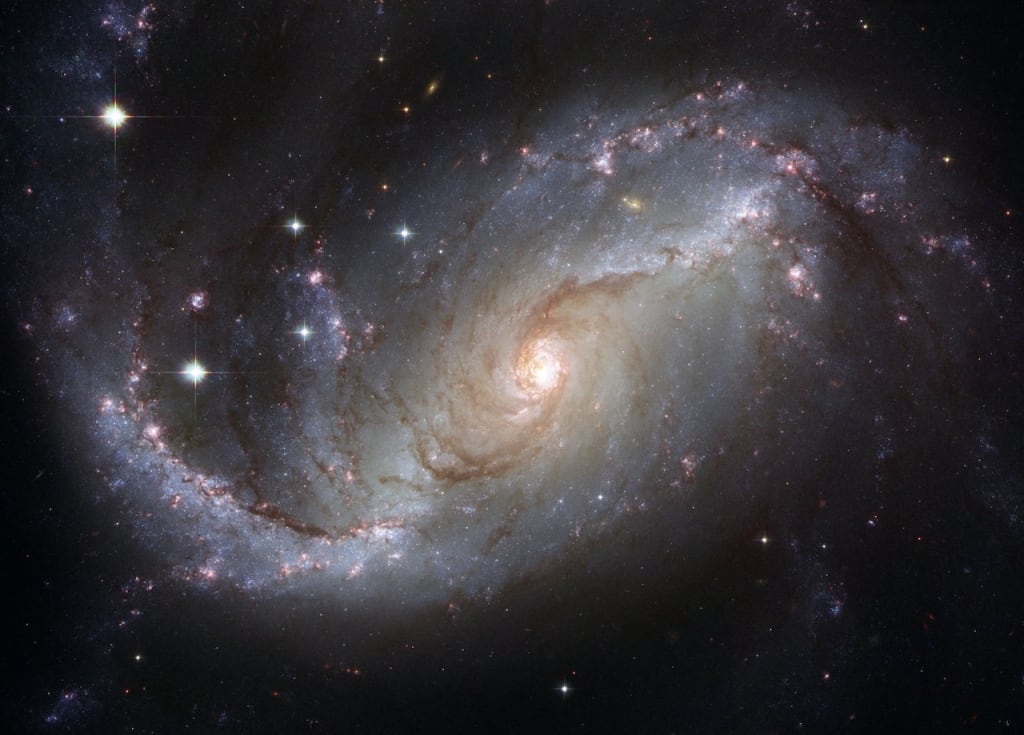"Shining Bright: The Fascinating Science of Stars and How They Are Formed"
Stars are created through a process called stellar formation, which involves the collapse of large clouds of gas and dust known as molecular clouds.

Exploring the Stars in Our Galaxy
The Milky Way galaxy is a vast and beautiful collection of stars, gas, and dust. It contains billions of stars, each with its unique properties and characteristics. In this article, we will explore the stars in our galaxy, from their formation to their classification and behavior.
Formation of Stars
Stars are formed in large clouds of gas and dust called nebulae. These clouds are composed mostly of hydrogen and helium, the two most abundant elements in the universe. As these clouds contract, they heat up and become denser, eventually reaching temperatures and pressures high enough for nuclear fusion to occur. Fusion is the process by which two or more atomic nuclei come together to form a heavier nucleus, releasing a tremendous amount of energy in the process.
Once fusion begins, a star is born. The energy released by fusion creates an outward pressure that balances the inward pull of gravity. This balance is maintained throughout the star's life, with the gravity and fusion energy in equilibrium.
Stars are created through a process called stellar formation, which involves the collapse of large clouds of gas and dust known as molecular clouds. The process of star formation can be broken down into several stages:
Gravity triggers the collapse of a molecular cloud: The gravitational attraction between the gas and dust particles in a molecular cloud causes it to begin collapsing in on itself.
Formation of a protostar: As the cloud collapses, it becomes denser and hotter, eventually forming a protostar at its center. The protostar is not yet hot enough for nuclear fusion to occur, but it is gradually increasing in temperature and pressure.
Accretion of material: As the protostar forms, it continues to draw in more gas and dust from the surrounding cloud. This process is known as accretion and can continue for tens of thousands of years.
Ignition of nuclear fusion: Once the temperature and pressure at the core of the protostar reach a critical point, nuclear fusion begins. This is the process by which hydrogen atoms are fused together to form helium, releasing a tremendous amount of energy in the process.
Establishment of hydrostatic equilibrium: As nuclear fusion continues, the energy released creates an outward pressure that balances the inward force of gravity. This balance is known as hydrostatic equilibrium and allows the star to maintain a stable size and temperature.
Classification of Stars
Stars are classified based on their properties, such as temperature, luminosity, and spectral type. Temperature is the most critical factor in determining a star's classification, and it is measured using a unit called Kelvin (K). The hottest stars have temperatures of around 30,000 K, while the coolest stars have temperatures of around 3,000 K.
Luminosity is a measure of a star's total energy output and is determined by its temperature and size. It is measured in units of watts, and the most luminous stars can output millions of times more energy than the Sun.
Spectral type is determined by analyzing the light emitted by a star. Each star's light is separated into its component colors, creating a spectrum. The spectral type is based on the presence or absence of specific lines in the spectrum, which correspond to the elements present in the star's atmosphere.
Behavior of Stars
Stars are dynamic objects that change over time. Young stars are often surrounded by disks of gas and dust, from which planets and other objects can form. As stars age, they can expand and contract, and their luminosity and temperature can change. Some stars end their lives in spectacular explosions called supernovae, which can create elements heavier than iron and scatter them throughout the galaxy.
The life cycle of a star depends on its mass. Smaller stars, like red dwarfs, can burn their fuel for trillions of years, while larger stars, like blue giants, have much shorter lifetimes of only a few million years. When a star runs out of fuel, it can go through a variety of different stages, depending on its mass. Low-mass stars can end up as white dwarfs, while higher-mass stars can become neutron stars or black holes.
Conclusion
The stars in our galaxy are fascinating objects that are constantly changing and evolving. They range in size, temperature, and luminosity, and each has its unique properties and behavior. By studying the stars in our galaxy, astronomers can better understand the universe's structure, history, and evolution. As we continue to explore the stars, we are sure to uncover new and exciting discoveries about our place in the cosmos.
About the Creator
Emmanuel Andrew
"I am a blogger and researcher who loves to write content about adventurous experiences and knowledge to share with readers. With a passion for writing and a love of travel, I seek out fascinating new perspectives."






Comments
There are no comments for this story
Be the first to respond and start the conversation.